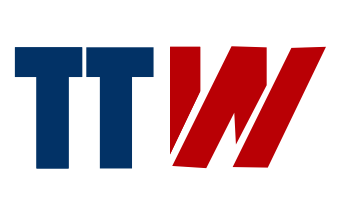The Seahawks’ offense is humming. Can they sustain it without a reliable running game? – The Athletic

The Athletic has live coverage of Bucs vs. Lions and Texans vs. Seahawks on ‘Monday Night Football’
JACKSONVILLE, Fla. — The Seattle Seahawks have a top-10 offense led by a quarterback playing at an elite level, in large part because of his connection with the league’s most productive receiver. Through six weeks, Seattle has plenty to be excited about regarding its new-look unit under offensive coordinator Klint Kubiak.
At the same time, head coach Mike Macdonald cares just as much about the process as the results. The results have been good, yes, but there’s also a question of sustainability and identity as it pertains to the process. The Seahawks are not completely one-dimensional, but the passing attack is doing the heavy lifting in a way that is concerning for a team that wants to hang its hat on the ground game.
Seattle ranks among the league leaders in running back carries and eighth in yards by its tailbacks (all stats provided by TruMedia). Kubiak hasn’t abandoned the run like some of his predecessors did; the Seahawks just aren’t very effective at it.
“We need to improve on our run game,” Macdonald told reporters Monday. “It’s pretty cut and dry.”
On running back carries — excluding receiver runs, quarterback scrambles, etc. — Seattle ranks among the league’s worst teams in expected points added. Only the Las Vegas Raiders running backs have lost yards or been stopped for no gain at a higher clip than Seattle, which also owns a below-average success rate.
Ken Walker III has 364 rushing yards on 4.7 yards per carry and is outproducing Zach Charbonnet (156 yards, 2.6 yards per carry) in both categories. Walker’s per-carry EPA and average yards after contact are better than his backfield mate’s.
However, Walker also has one of the highest average yards before contact, while Charbonnet is at the bottom of the league in the same category (and yet still has a better success rate). Walker has been the better player and has also benefited from better blocking from a unit that hasn’t been spectacular for either runner. One solution would be to give Walker the ball more often (though Macdonald clearly prefers a timeshare).
But to fix the ground game, the whole operation needs to improve.
“We’ve got the keep chiseling away at it,” Macdonald said Monday on his weekly radio show. “It’s not like we’re going to give up on our run game. Can’t throw it 70 times a game and be the type of team we want to be. We’ve played some good fronts, a lot of great players, some good schemes, so that’s part of it.”
Macdonald said “how we’re executing” is also among his biggest observations when assessing the run game.
“They are solid, sound plays,” Macdonald said. “They are plays we’ve been running since April; it’s not like we’re reinventing the wheel every week, figuring out new ways to run the same package set of plays. It’s a block here, it’s a block there, it’s a communication thing, it’s an angle there, it’s how we run it — it’s all these little things.”
For now, the Seahawks have done just enough in the run game for the rest of the offense to be lethal. The Seahawks are averaging 27.6 points per game and 2.41 points per drive, good enough to crack the top 10 in both categories. Sam Darnold is among a handful of quarterbacks playing at an All-Pro level, and Jaxon Smith-Njigba is the league’s leading receiver with outstanding efficiency. Darnold, Kubiak and the primary pass protectors are working well together, which is why the quarterback’s sack rate of 4.2 percent is among the lowest in the league and the lowest of his career.
But there’s a strong correlation between offensive balance and sustained success. And sustainability aside, imbalance is one of the reasons Seattle’s past two wins were closer than they should have been. It’s harder to slam the door shut on an opponent with the fastball alone. A changeup is necessary.
The Seahawks began their first drive of the fourth quarter on Sunday leading 20-12 with 13 minutes remaining. Walker ran for 2 yards out of the shotgun on first down. Darnold hit tight end AJ Barner for 6 yards on second down, setting up third-and-2. Darnold didn’t have an answer for Jacksonville’s blitz and took a sack.
Walker began the next series with a 6-yard run between the tackles on first down. The next play was a perimeter run to the left by Walker that went backwards because the Jaguars set a solid edge. Darnold threw incomplete on third-and-7 before another punt.
Seattle began the next drive with two consecutive passes. Then on second-and-10, three plays into the possession, Charbonnet took a handoff from the shotgun and gained just 2 yards. The Seahawks dressed that run up with a Smith-Njigba orbit motion against a five-man box and still couldn’t generate a successful carry. Darnold threw incomplete on third-and-8.
Walker and Charbonnet combined for 58 yards on 22 attempts and just one first down (by Walker in the first half). Charbonnet had some understandably bad runs as Seattle bled the clock on the final possession, but the offensive line also failed to get him in the end zone on three straight goal-line runs in the first quarter.
“I think we can do a better job,” Macdonald said of the run game Sunday. “I think there might be some more plays out there.”
Fortunately for Seattle, the defense was stout throughout the final frame and bought enough time for Darnold to eventually hook up with Barner for 61 yards to secure the victory.
“Our defense thug’d it out,” Barner said. “We got ball players over there. We need to pick them up better next time. We can’t keep them out there. But when it mattered most, they got stops, and we were able to close it out.”
The Jacksonville game followed a similar script to some of Seattle’s other wins. Against Pittsburgh, it was Darnold and the passing game that ultimately sealed the deal. His third-and-9 improvisation — after two failed runs by Charbonnet — and 43-yard hookup with Smith-Njigba set up Walker’s touchdown run on third-and-goal from the 19 (Seattle almost certainly expected Walker’s run to set up a field goal). Seattle punted after three bad runs by Charbonnet on its final drive, too, although the game was basically over by that time.
In Week 4, Seattle led Arizona 20-13 at its own 22-yard line with 5:44 left to play. Every coach would love to deploy its four-minute, grind the clock out and end the game with the ball or a score of some kind with less than two minutes remaining. The Seahawks reached Arizona’s 38-yard line thanks to a long catch by Smith-Njigba. The next three plays were a Walker run for 1 yard, a Walker run for no gain and a Charbonnet run for 2 yards on third-and-9. Jason Myers missed a 53-yard field goal.
There are multiple truths at play here. On one hand, Seattle is clearly capable of putting the nail in the coffin with its passing game, which is good. It is also true that there are limitations to overreliance on that facet of the game.
And although Macdonald’s defense is playing well, the unit has already shown that not every late-game lead is safe. Brock Purdy and the San Francisco 49ers showed that in Week 1. Kyler Murray and the Cardinals rallied in Week 4. Baker Mayfield and the Tampa Bay Buccaneers saw Seattle’s 99-yard, go-ahead scoring drive in Week 5 and came back with a five-play, 70-yard rebuttal.
Maybe with the defense at full strength, that won’t be an issue. But if there’s any lesson to take away from the first six weeks, it’s that banking on a fully healthy roster is an unrealistic expectation. Seattle has very little control over the number of starters on its injury report. It has far more control over its ability to deploy a more balanced offense. Whether Seattle can make that happen might determine the outcome of the next game. The Houston Texans are bringing the No. 1 defense to town in Week 7.





